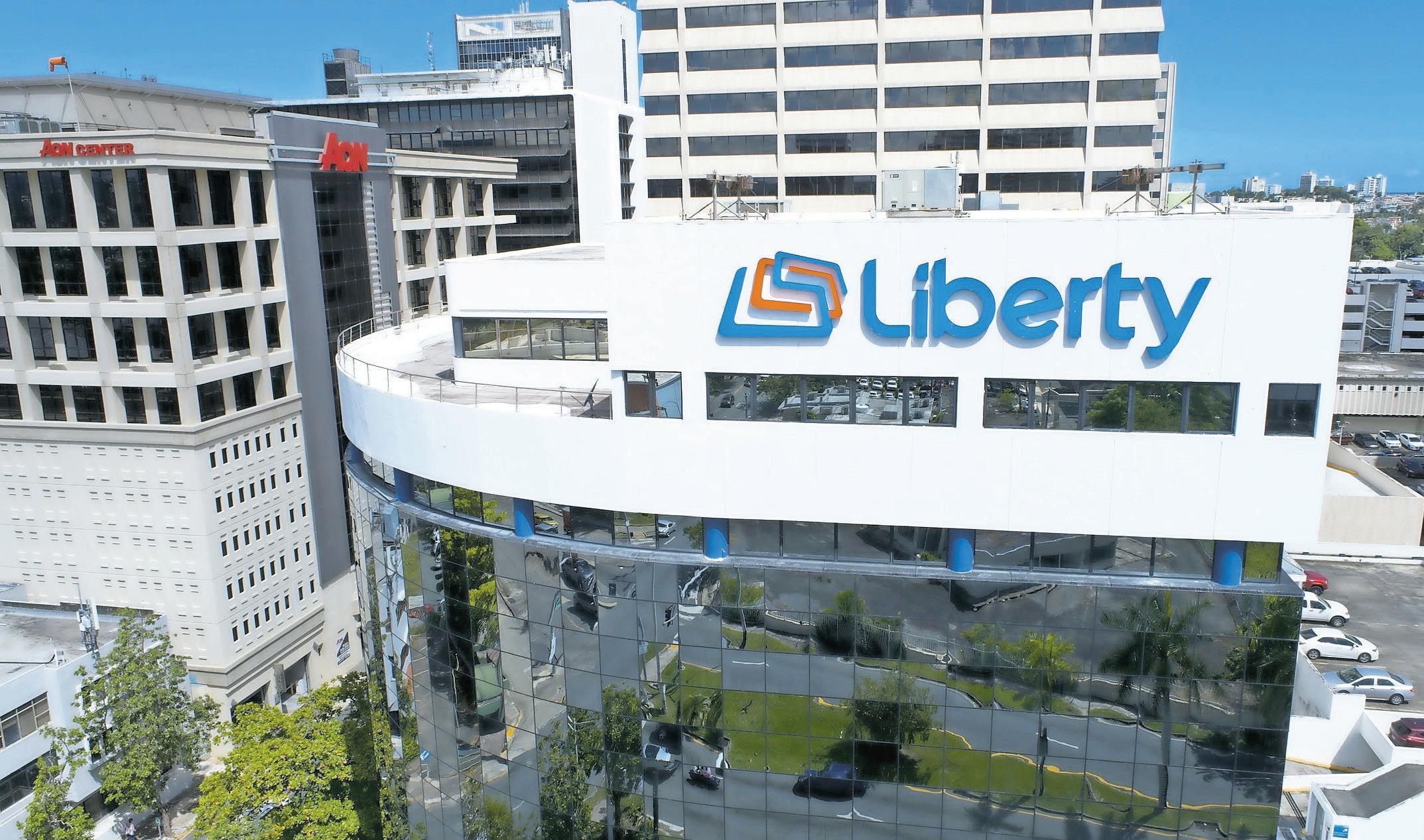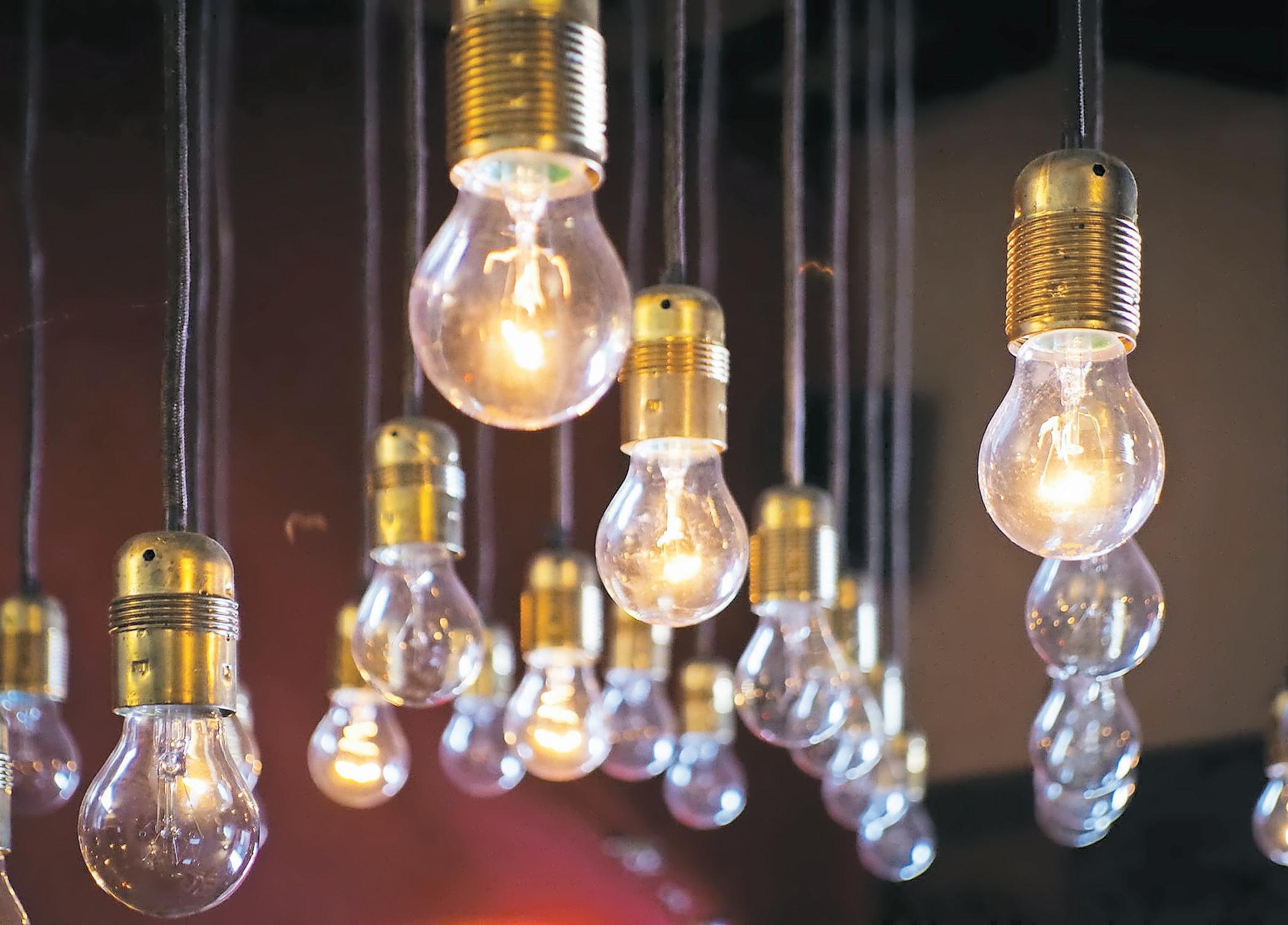
13 minute read
WaRnings on coMplacency on econoMy
CNE: Alert on ‘False Sense of Complacency’ on the Economy
As pace of Hurricane Maria reconstruction funds increase
Advertisement
Rosario Fajardo
rfajardo@wjournalpr.com @RosarioWJournal
Editor’s note: The second article in a two-part series
While it’s no secret that the pace of federal disbursements on recovery funds for Puerto Rico related to Hurricane Maria, which hit the island more than four years ago, has been slow, especially during the Trump administration, the island should see a noticeable increase in the coming years.
However, the “delayed disbursement schedule” presents several risks for Puerto Rico, according to Sergio Marxuach, Center for a New Economy’s (CNE) Policy director and editor of the think tank’s publication: The CNE Review.
In the analysis released by the specialized newsletter, Marxuach cites the Financial Oversight and Management Board’s (FOMB) Certified Fiscal Plan for Puerto Rico – April 23, 2021 on the expected federal disbursements in the next couple of years.
According to the FOMB, expects disaster recovery expenditures to amount to $3.95 billion, $5.31 billion and $4.68 billion for each of fiscal years 2022, 2023 and 2024, respectively. “That would be equivalent to 5.6 percent, 7.5 percent and 6.6 percent of nominal GNP [gross national product] in 2020. We note, though, that the bulk of recovery funding, some $47.44 billion, is scheduled to be disbursed during the ten-year period between 2025 and 2035,” Marxuach writes in “The Threefold Challenge in the Puerto Rican Economy.”
The island is facing several risks in this regard. For example, Congress may reprogram funding allocated for disaster recovery in the island, while the economic impact during any given year is diluted as funds are spent over 15 years, CNE indicates. “Conversely, the extended timeline may allow Puerto Rico to properly implement procurement regulations, auditing controls and other compliance mechanisms required by the federal government and to avoid a foreseeable shortage of the skilled labor required for some of these large infrastructure projects.
Dependence on Federal Transfers
“In the end, however, the main risk regarding the Hurricane Maria reconstruction could be the creation of a false sense of complacency as the economy begins to grow when the federal money starts to flow. It would be a mistake to believe that our economic problems will be over once the disbursement of federal reconstruction funding begins in earnest for at least two reasons,” as per the report.
Marxuach notes that foremost, all that economic activity will be financed with federal funds transferred to Puerto Rico’s government instead of locally generated resources. “It may be easy to forget that once the good times are rolling and erroneously believe the reconstruction is driven by the strengthening of the Puerto Rican economy, when in fact it is powered by Congressional largesse.
“Second, the reconstruction process, by its nature, is designed to rebuild and repair what was damaged or destroyed by Hurricane Maria. In that sense, its main objective is to restore Puerto Rico’s capital endowment to its pre-hurricane state. The reconstruction of damaged or lost assets does not constitute a net addition to the island’s long-term productive capacity.”
According to CNE, four years after Maria wreaked havoc in Puerto Rico and generated some $90 billion in damages, the pace of reconstruction remains slow — while Congress has allocated $64 billion for disaster relief and recovery operations on the island, as of June 30, 2021, only $18.6 billion, or approximately 29 percent, had been spent. “Furthermore, some of the most important work — refurbishing and modernizing the electric grid; rebuilding schools, housing, roads, bridges, and healthcare facilities; and undertaking mitigation activities to increase resiliency and reduce the risk exposure of vulnerable populations — has not yet begun,” the report states.
Marxuach believes it is worrisome that economic growth in the short term depends mostly on the receipt of federal transfers that “we do not control. We worry that these expenditures will have a temporary positive impact on the economy that may set back efforts to develop a medium/long-term economic strategy or plan for Puerto Rico. Let’s avoid that trap and keep focused on addressing the structural factors that are the root cause of Puerto Rico’s long-term economic stagnation,” he added.

Focus on Improving the Local Business Environment
An Executive Profile: Invest Puerto Rico’s COO outlines her goals
Giovanna Garofalo
ggarofalo@wjournalpr.com @giopgarofalo
Ella Woger-Nieves knew from an early age that she wanted to contribute to Puerto Rico’s economic development. After more than 20 years of experience working with multinationals on the island and the United States, Woger was appointed as the Chief Operations
Officer (COO) of Invest Puerto Rico (Invest PR), where she continuously works toward improving the local business environment.
Born in Puerto Rico, Woger pursued a bachelor’s degree in Economics at the University of Pennsylvania. “When I was in college, I took an economics class and it was fascinating to me how different economic factors can really shape the global context of a country. I decided that I really wanted to better understand the context of what was happening in the world and how economics really affected the sociopolitical landscape of different countries, and be able to apply that when
I got back to Puerto Rico. This was one of the reasons why I really wanted to focus on economics and being able to really use that,” she told THE WEEKLY JOURNAL.
Rather than pursuing a career in the U.S. mainland, Woger returned to her island to apply that knowledge. Her first gig was at Ernst & Young LLP in San Juan - a professional services company - where she worked for five years providing strategic-marketing advisory services. During this time, she worked directly with companies, helping them develop their strategic planning initiatives. Afterward, she worked at Johnson & Johnson’s offices in Caguas in the marketing department - a move that allowed her insight into the biopharmaceutical industry, currently a hot topic among politicians and investors who want to reshore pharmaceuticals to Puerto Rico.
From there, she switched back to her selfproclaimed “management consulting hat” and went to a local strategic management consulting firm called Vision-to-Action, or V2A, where she worked for six or seven years. “I grew there as a professional and I worked among many different types of industries,” Woger said. However, during that period she moved to Miami, Fla. to continue her work at V2A. “Then I was offered a unique opportunity to work in [Washington] D.C. at a company called Collage Group, and the mission of that company was to help companies navigate and market to the fastest-growing of influential consumers in the U.S. I did a marketing strategy and consulting for a variety of clients in different industries, from financial services to consumer products,” she added.
With so many work experiences, Woger was eager to accept a new position for Invest Puerto Rico, a nonprofit organization designed to market the island as an attractive investment destination. “It’s such a unique opportunity because we were in a unique moment in time to be able to contribute to the economic development of the island,” she said, alluding to the devastating 2017 hurricanes and the influx of federal funding that came along with them, plus the island’s robust tax incentives encompassed in Acts 20 and 22 of 2012, now Act 60. “I decided to pack my bags and come back here after six years in the States. I came here in 2018.” Moreover, she underscored her goal at Invest PR to help decrease outmigration and attract Puerto Ricans from the diaspora. “Just like I came back to Puerto Rico, I was part of the diaspora and I came here for an opportunity. I believe that Invest PR can be a mechanism to create job opportunities - bring back companies that will generate jobs. We are going to have a greater employment tool and


>Courtesy
we are going to be able to bring back the diaspora that is seeking these good opportunities and bring them back to the island to really contribute to the economic development of the island,” Woger affirmed.
She added that this is “a personal motivation for me because I think it’s important that we create a bright Puerto Rico where economic development is sustainable and for it to be lasting. We are not looking for short-term solutions here; we want to work to create sustainable, long-term economic development together with our partners, and I think that is a very critical part of our mission here.”

Liberty unveils a new logo and ad campaign. >Courtesy of Liberty Puerto Rico
Liberty Puerto Rico Offering New Speeds, New Services
Giovanna Garofalo
ggarofalo@wjournalpr.com @giopgarofalo
Liberty Puerto Rico has announced a diversified offer for its individual and commercial clients as part of the telecommunications company’s new corporate identity. Since completing the acquisition of AT&T’s assets in Puerto Rico nearly one year ago, Liberty became a more pliable entity by adding mobile services to its internet and cable products, the company said. As such, Liberty unveiled a new corporate identity to reflect its broader impact on the island’s telecommunications industry. Waldo Hooker, VP of Products and Customer Experience at Liberty, said that “we are super proud, and when we talk about the new Liberty now with the three services - mobile, internet and television - we are able to offer more benefits for our clients by having all their services with us. “Liberty has always been a company that when you have more services with us, you save more, and we provide more value for your money.
So, we are introducing new speeds and new services for customers who have both internet and mobile. As you can see, the new initial speed becomes 300 mega, which is a super-fast speed for an excellent price, for $87.99 - which includes first-rate Spanish television, including landline telephone services. In addition to that, if you are a mobile customer, you receive double the speed for free,” Hooker said. For his part, Naji Khoury, the president and CEO of Liberty, said that “for us at Liberty, every connection counts. By integrating mobile services into our product offering, Liberty is now the most comprehensive communications, technology and entertainment company, offering consumers a better way to live and connect with what matters most to them, no matter where they are, from any device, and better than any other company.” Khoury said the company has invested $85 million in network and infrastructure improvements during the first half of 2021, representing an increase of 160 percent compared to the same period last year. Because of this, Liberty today has nearly 8,000 miles of fiber between fixed and mobile networks, allowing for greater network velocities. In terms of capacity, Khoury mentioned that the fixed network now has twice the capacity and that the company has carried out over 500 extensions of mobile network capacity. Additionally, he said that 5G coverage has continued to increase since the AT&T acquisition last October, and now covers 95 percent of the population in Puerto Rico, Culebra, Vieques and the U.S. Virgin Islands. “We will continue to invest to improve and expand both networks in terms of coverage, capacity, and reliability,” the CEO said. “Liberty is building and adding more fiber to expand our coverage area and burying our fiber to protect it from natural disasters.” As for making services more accessible, Khoury explained that Liberty customers will have more than 100 points of sales and services throughout the island before the end of the year to obtain broadband, television and mobile services under one roof, more value in products and combined offers, efficient digital channels, consistency in service across touchpoints. Customer service options will remain the same for both landline and mobile customers. Khoury noted that calls from postpaid mobile and Liberty Business clients are handled 100 percent in Puerto Rico, while calls for fixed service are handled in Aguadilla and Luquillo, as well as off-island centers. Liberty has added customer service channels such as WhatsApp and Lila, the company’s virtual assistant, which customers can contact by sending a text message via WhatsApp using the same customer service number for landline services: 787-355-3535. “The most important part for us, not just as Liberty employees but as people who live on the island, is a new beginning... We are people with a lot of optimism for the future. We believe that Puerto Rico will continue forward; we believe that our technology... will help the island grow,” Khoury affirmed.
Eduardo Hilera, M.P.S.,
Emergency Management and Homeland Security Expert
Who has the Power?
Puerto Rico’s power grid needs to be strengthened. Puerto Ricans need reliable electric service, and Puerto Rico’s government needs the flexibility to complete both missions without mandates that delay both and accomplish neither.
Hurricane Maria hit Puerto Rico in September 2017, but Puerto Rico’s power grid was weak before Hurricane Maria. Puerto Ricans continue to face a grim reality—the power grid in Puerto Rico is not reliable for many reasons, from its aging infrastructure to federal requirements placed upon its reconstruction and the processes by which funding for its restoration are administered. Puerto Rico needs a sustained grid, while it moves on to a sustainable one. FEMA defines recovery in terms that include “rebuilding damaged structures…,” “reducing vulnerability…,” and “preventing stress-related illness and excessive financial burdens…” These recovery positions, however, stand in contrast with federal policies that look to force Puerto Rico to modernize its power generation at the same time as it has to stabilize it, and leaves initial financing to the island, until it can prove that it has spent the money in a way that is acceptable to the federal government.
How can Puerto Rico and the federal government arrive at a compromise on what sustainable recovery looks like, while also ensuring that the Puerto Rican people have the service they need in the immediate term?
An advanced, modern, sustainable power grid is important, but a power grid that allows Puerto Rico to continue its path towards recovery is just as important.
Since the summer of 2021, Puerto Rico’s power grid and power generation capacity failed consistently, with power outages that have left over one million residents in the dark at certain times. The power outages continue, and explanations are scarce. Throughout the island’s history, Puerto Rico’s government policies have been discussed in Washington, D.C. with the island’s leaders and residents on the sidelines, fighting to be heard while Washington insiders debate what Puerto Rico must do to recover. These conversations ignore Puerto Rico’s territorial status, its cultural complexities and its difficulties in moving policy agendas that are focused on national hotbutton issues and not necessarily with Puerto Rico’s best interests at heart.
In the past 18 months, the world has seen a pandemic that has tested every country, every state, every city and every town on the planet. Puerto Rico has also been hit by historically destructive hurricanes and earthquakes. Puerto Rico’s emergency management capabilities have been tested and tested again. Along with the challenges that all these situations have presented, Puerto Rico has been faced with a failing electric grid. The current administration in Puerto Rico inherited a contract signed by the previous governor and the responsibility of working to set in motion a management agreement that has gotten off on the wrong foot. Just this week, new leadership was appointed and has taken over Puerto Rico’s power authority, in hopes that it will turn this ship around and work to improve a situation that has many Puerto Ricans constantly aggravated, worried and understandably impatient. The most important step that this new leadership can take is to ensure that the electric grid on the island is restored to a strong reinforced state that allows the power authority to provide reliable energy and makes it feasible for the current or any other administrative service contractor to provide the grid with the necessary care, for the people of Puerto Rico to receive the service they deserve. In the meantime, the shapers of policy and public opinion in Washington should look to the needs of the people of Puerto Rico, above all to policy changes they favor.





